For the 2025 school year, there is 1 public elementary school serving 282 students in Branch Independent School District. This district's average elementary testing ranking is 5/10, which is in the bottom 50% of public elementary schools in Michigan.
Public Elementary School in Branch Independent School District have an average math proficiency score of 27% (versus the Michigan public elementary school average of 34%), and reading proficiency score of 37% (versus the 44% statewide average).
Minority enrollment is 12% of the student body (majority Hispanic), which is less than the Michigan public elementary school average of 38% (majority Black).
Overview
This School District
This State (MI)
# Schools
2 Schools
2,544 Schools
# Students
282 Students
953,641 Students
# Teachers
32 Teachers
58,885 Teachers
Student : Teacher Ratio
24:1
24:1
District Rank
Branch Independent School District, which is ranked within the bottom 50% of all 851 school districts in Michigan (based off of combined math and reading proficiency testing data) for the 2021-2022 school year.
The school district's graduation rate of 50% has stayed relatively flat over five school years.
Overall District Rank
#481 out of 866 school districts
(Bottom 50%)
(Bottom 50%)
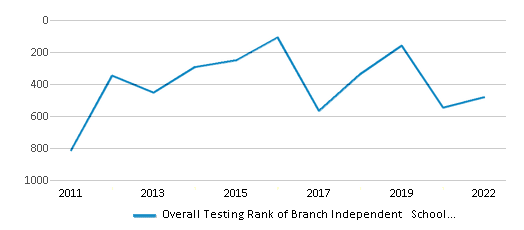
Math Test Scores (% Proficient)
25-29%
34%
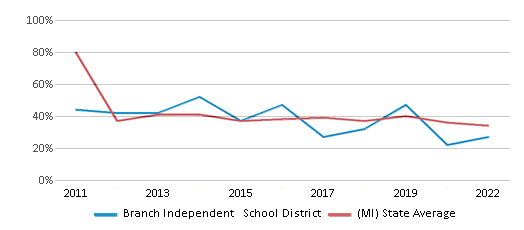
Reading/Language Arts Test Scores (% Proficient)
35-39%
45%

Science Test Scores (% Proficient)
30-39%
38%
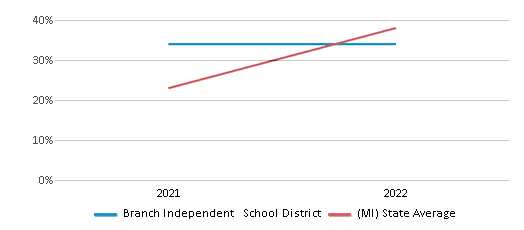
Graduation Rate
<50%
81%

Students by Ethnicity:
Diversity Score
0.22
0.57
# American Indian Students
n/a
6,574 Students
% American Indian Students
n/a
1%
# Asian Students
1 Student
35,670 Students
% Asian Students
n/a
4%
# Hispanic Students
23 Students
87,214 Students
% Hispanic Students
8%
9%
# Black Students
3 Students
176,246 Students
% Black Students
1%
18%
# White Students
248 Students
592,590 Students
% White Students
88%
62%
# Hawaiian Students
n/a
812 Students
% Hawaiian Students
n/a
n/a
# Two or more races Students
7 Students
53,732 Students
% of Two or more races Students
3%
6%
Students by Grade:
# Students in PK Grade:
-
-
# Students in K Grade:
19
106,334
# Students in 1st Grade:
13
100,790
# Students in 2nd Grade:
12
102,777
# Students in 3rd Grade:
14
100,401
# Students in 4th Grade:
20
101,847
# Students in 5th Grade:
12
101,136
# Students in 6th Grade:
31
102,120
# Students in 7th Grade:
14
90,984
# Students in 8th Grade:
26
87,683
# Students in 9th Grade:
39
14,722
# Students in 10th Grade:
22
14,342
# Students in 11th Grade:
28
13,967
# Students in 12th Grade:
22
14,500
# Ungraded Students:
10
2,038
District Revenue and Spending
The revenue/student of $94,968 is higher than the state median of $18,510. The school district revenue/student has stayed relatively flat over four school years.
The school district's spending/student of $90,223 is higher than the state median of $17,693. The school district spending/student has stayed relatively flat over four school years.
Total Revenue
$27 MM
$25,476 MM
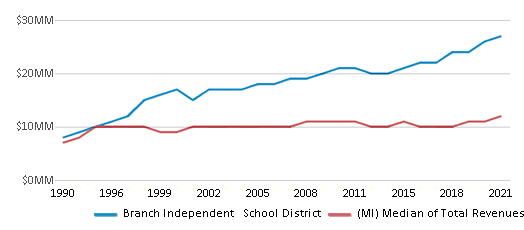
Spending
$25 MM
$24,351 MM
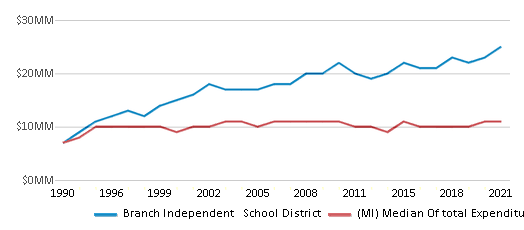
Revenue / Student
$94,968
$18,510

Spending / Student
$90,223
$17,693

Best Branch Independent School District Public Elementary Schools (2025)
School
(Math and Reading Proficiency)
(Math and Reading Proficiency)
Location
Grades
Students
Rank: #11.
Waldron Learning Center
Special Education School
(Math: 25-29% | Reading: 35-39%)
Rank:
Rank:
4/
Bottom 50%10
214 Bishop Ave
Coldwater, MI 49036
(517) 279-5821
Coldwater, MI 49036
(517) 279-5821
Grades: PK-12
| 282 students
Recent Articles

Sexual Harassment at Age 6: The Tale of a First Grade Suspension
A six-year old in Aurora, Colorado, was suspended after singing an LMFAO song to a little girl in his class and reportedly “shaking his booty.” We look at the case and the sexual harassment problem in public schools today.

How Scaffolding Could Change the Way Your Child Learns
This article explores the concept of instructional scaffolding, a teaching method that enhances learning by breaking down complex tasks into manageable parts. It highlights how scaffolding supports students in developing critical thinking skills and becoming more independent learners. The article discusses the benefits of scaffolding, including improved engagement and reduced anxiety, and provides strategies for its implementation across various educational levels.

February 05, 2025
Understanding the U.S. Department of Education: Structure, Impact, and EvolutionWe explore how the Department of Education shapes American education, from its cabinet-level leadership to its impact on millions of students, written for general audiences seeking clarity on this vital institution.





